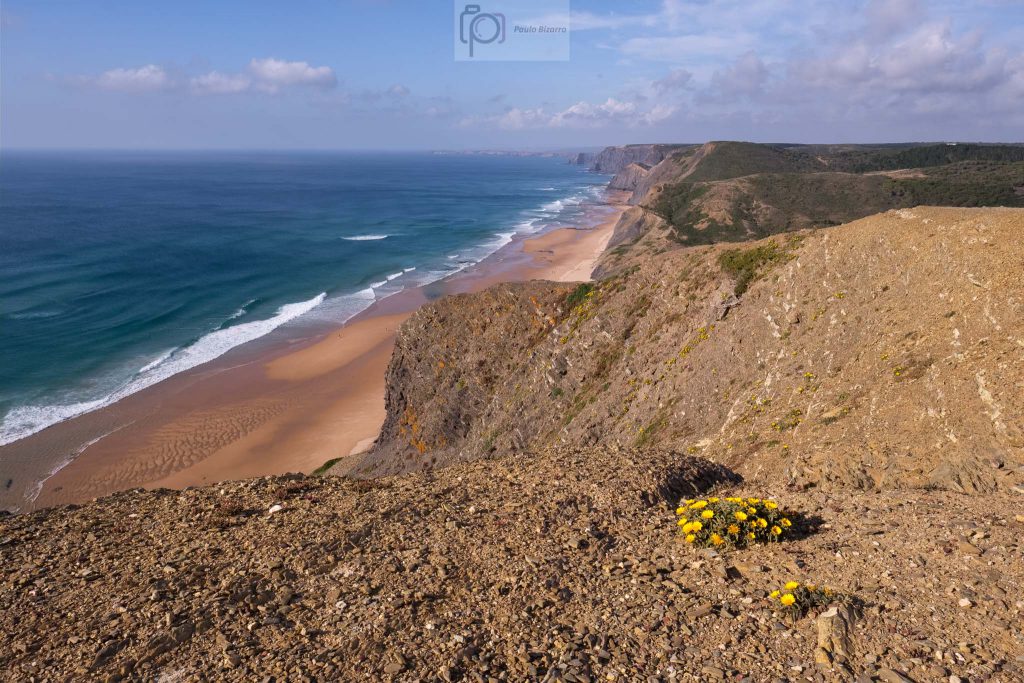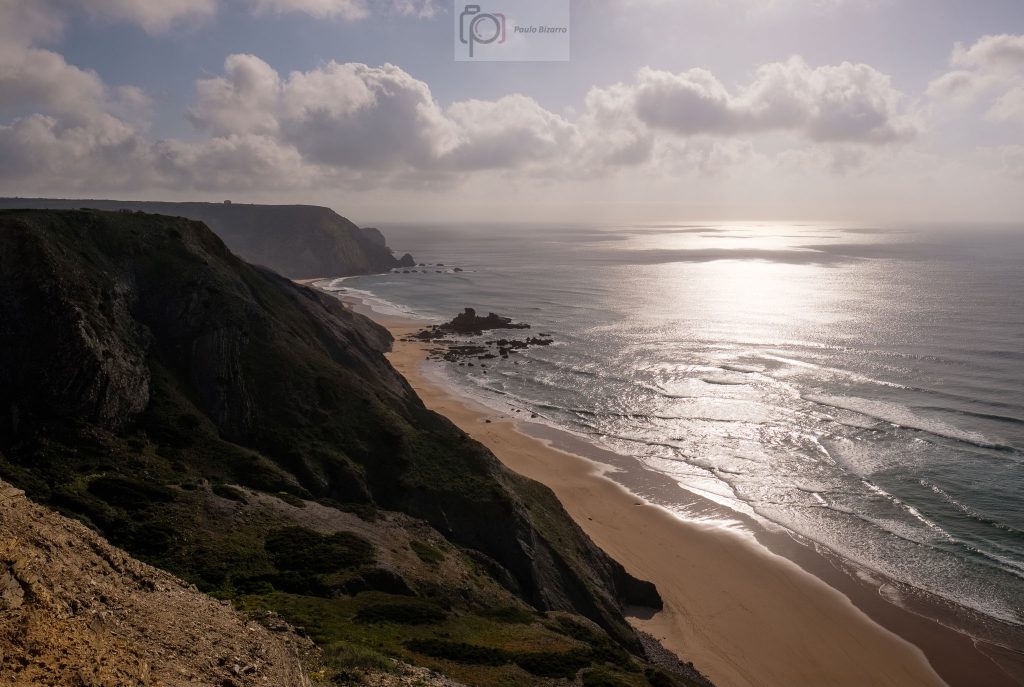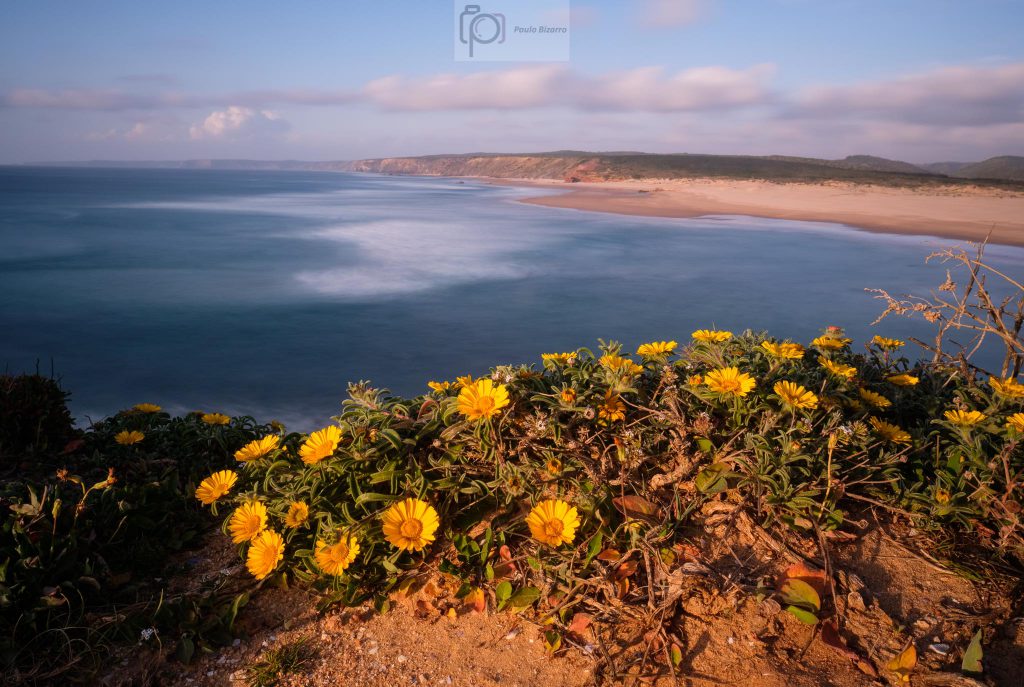After a (second) long period of confinement, from January to April, the Portuguese government has started to ease mobility restrictions a little. As a result, I was able to spend a few days of vacation in my house in Longueira, in the Alentejo coast. As you know, this is one of my favorite regions in Portugal, and I often spend time there with the family, hiking, photographing, or merely resting.
The coastal area between Sines and Sagres is part of the Southwest Alentejo and Vicentina Coast Natural Park, as illustrated in the figure below. During this trip I wanted to go back to a few places that I have not visited for several years, namely in the vicinity of the town of Vila do Bispo. This entire coast has many beautiful and wild beaches, some of difficult access, requiring driving through dirt tracks.



The geomorphology of the area is characterized by a high coastal plateau, a remnant of the latest deglaciation period, when the sea level dropped significantly, exposing the very old Paleozoic rock formations to erosion. The result is an almost flat and uplifted terrain, with gentle hills, here and there deeply cut by small rivers that flow towards the Atlantic ocean. There are many hiking trails that belong to the Rota Vicentina network; they are the best way to explore the area in detail, allowing magnificent views over the landscape.
Near Vila do Bispo, the Algarve coast reaches its highest altitude, at 156 m above sea level. Due to the strong and shifty winds, care is recommended when approaching the cliff’s edges. My first stop was at the Cordoama viewpoint, which is reachable by car. From here, looking North, one can see a series of beaches, like Cordoama, Carrapateira, and Arrifana. Looking towards the South, the magnificent beach of Castelejo lies down below.
As I wanted to try some long exposures, I walked a little bit downhill to get some protection from the wind. I then proceeded to set up my tripod as low as possible, and made several photos. The weather was nice, sunny but with some fast moving clouds; these beaches are very popular with surfers, which looked quite small when seen from this vantage point. For this trip I carried my Fujifilm kit, consisting of a couple of cameras and lenses.




One of the consequences of the constant wind is that there are hardly any trees near the shore. The land is covered with shrubs and small plants that are able to resist the climate. The rain quickly escapes towards the deeply cut creeks, leaving the soil dry. This leads to a normally bleak landscape, but during the Spring the hills come alive with myriad wild flowers of various colors. I spent some time photographing this colorful landscape, dotted with yellow, pink, purple, and white patches.





After leaving Cordoama, I drove north and stopped near the villages of Bordeira and Carrapateira. These are only separated by a couple of kilometres, and along the road the fields are covered with flowers, including red poppies, one of my favorites.


In Carrapateira, the beach is large and very sandy, located at the estuary of the small Bordeira river. Again, the (windy) view is wonderful and I spent the rest of the day time photographing, before driving back home to Longueira. There are so many things to see, photograph and experience in this region, that many more days are required to explore it fully. After the confinement, I was just happy to be able to return to the region, even if only for a short visit. This is truly a special place.




